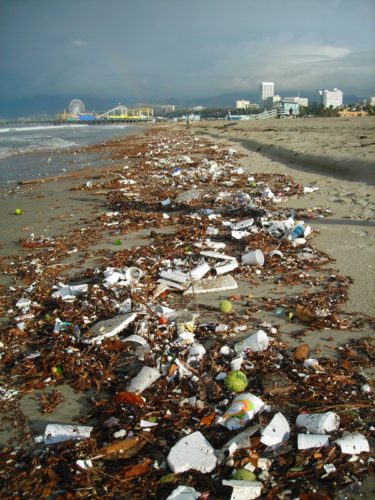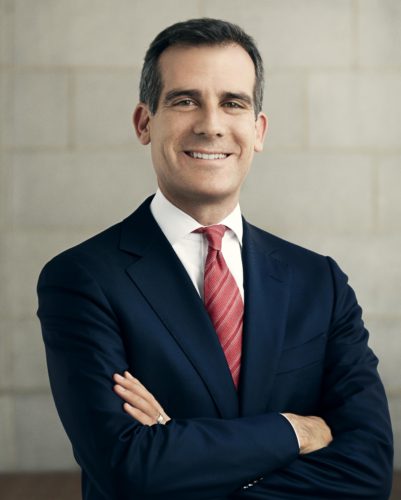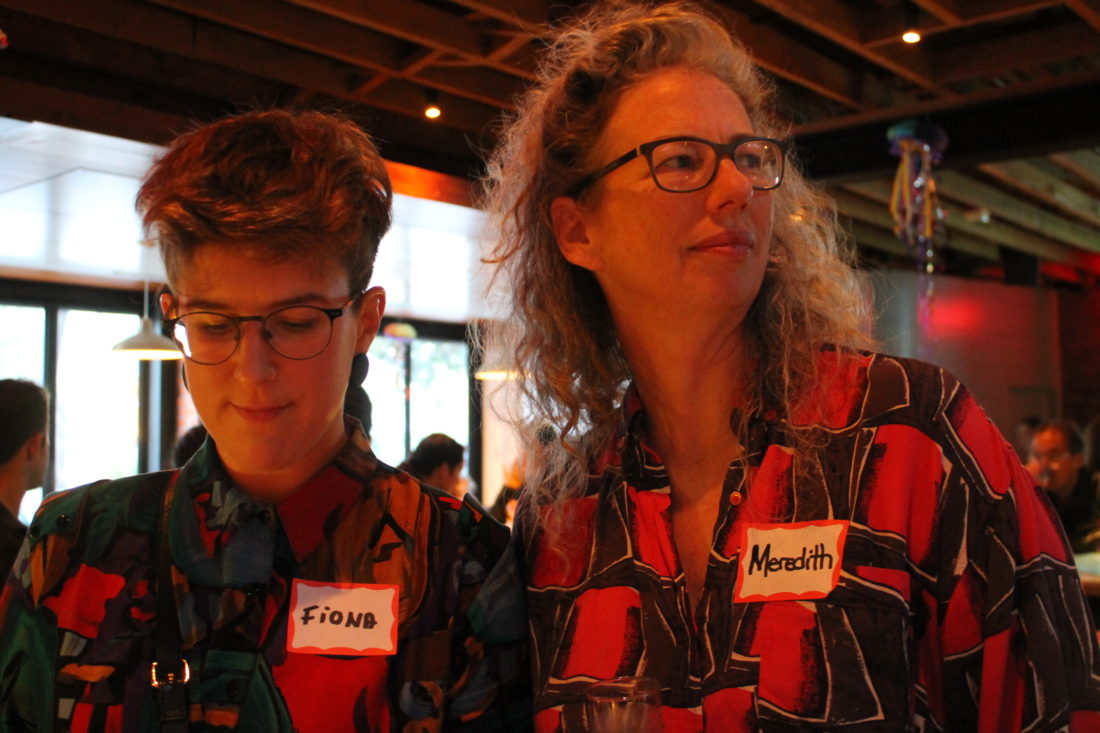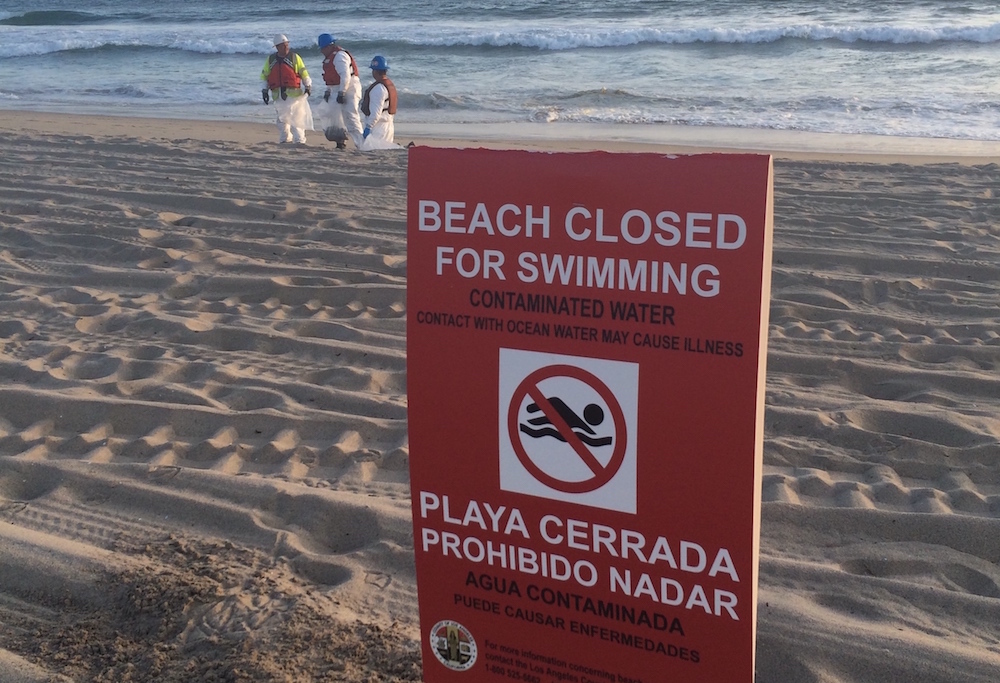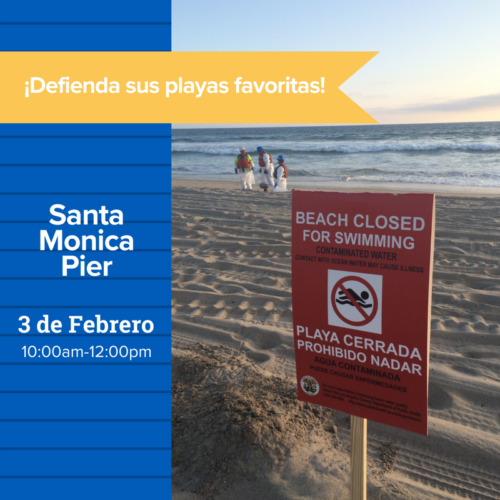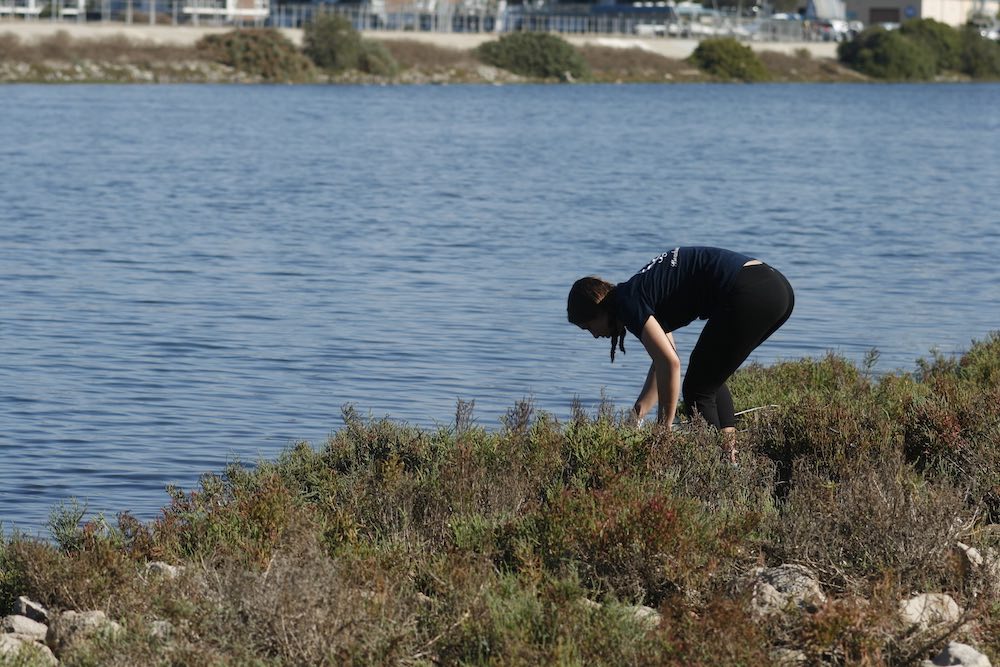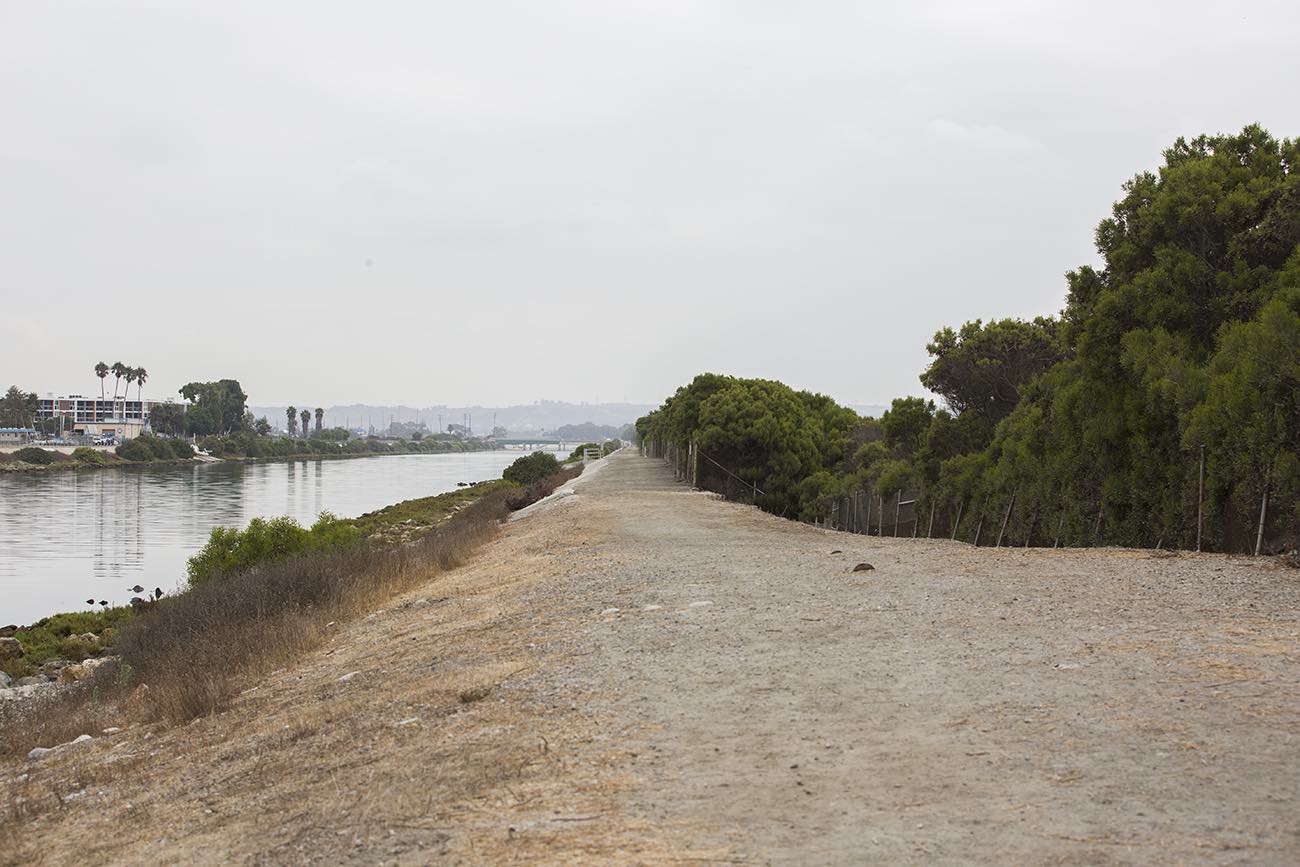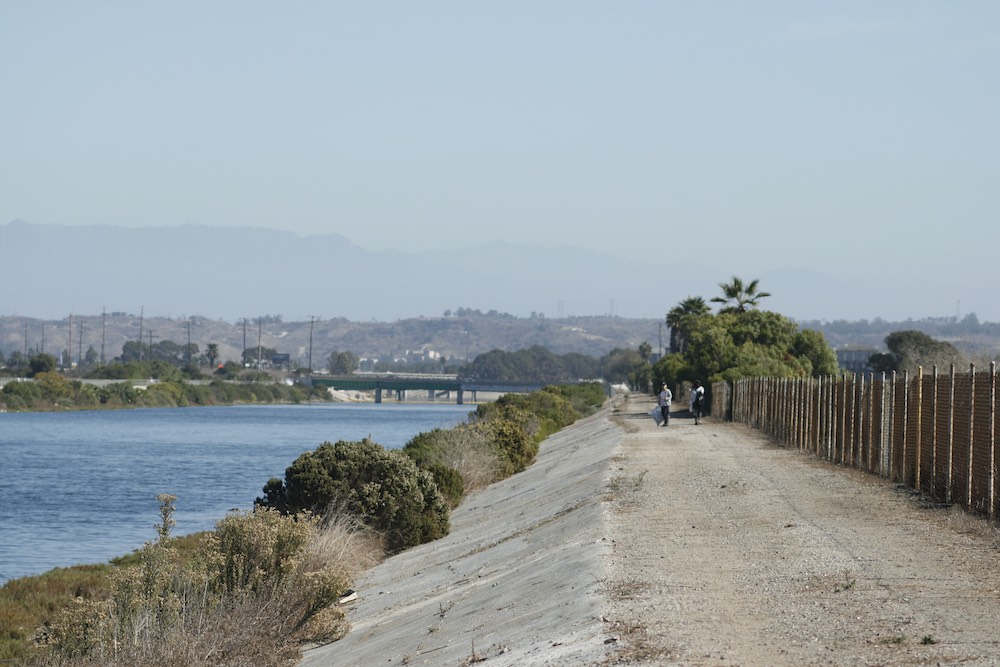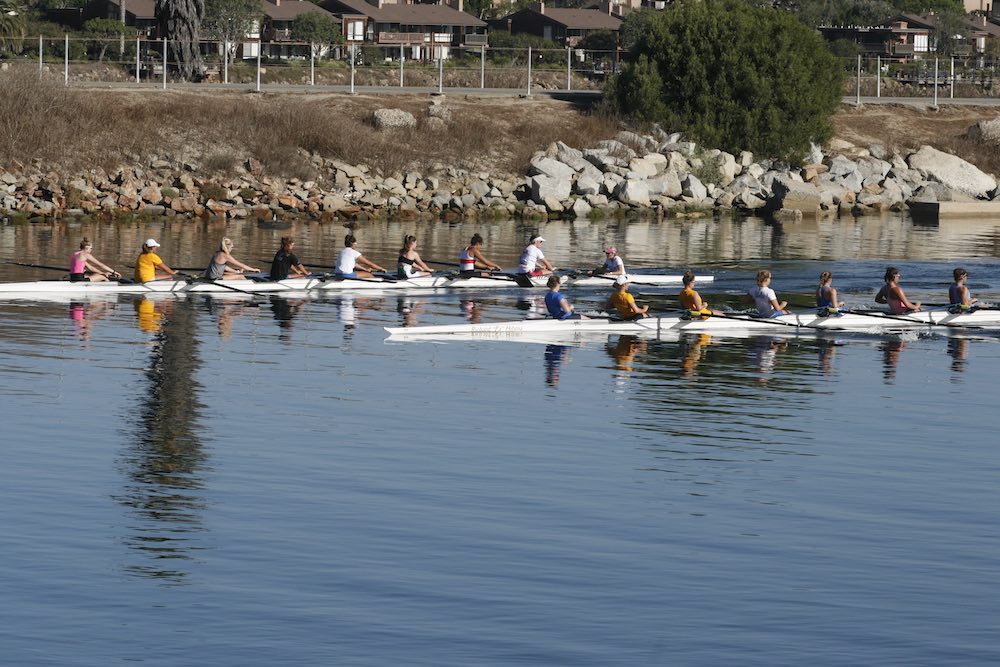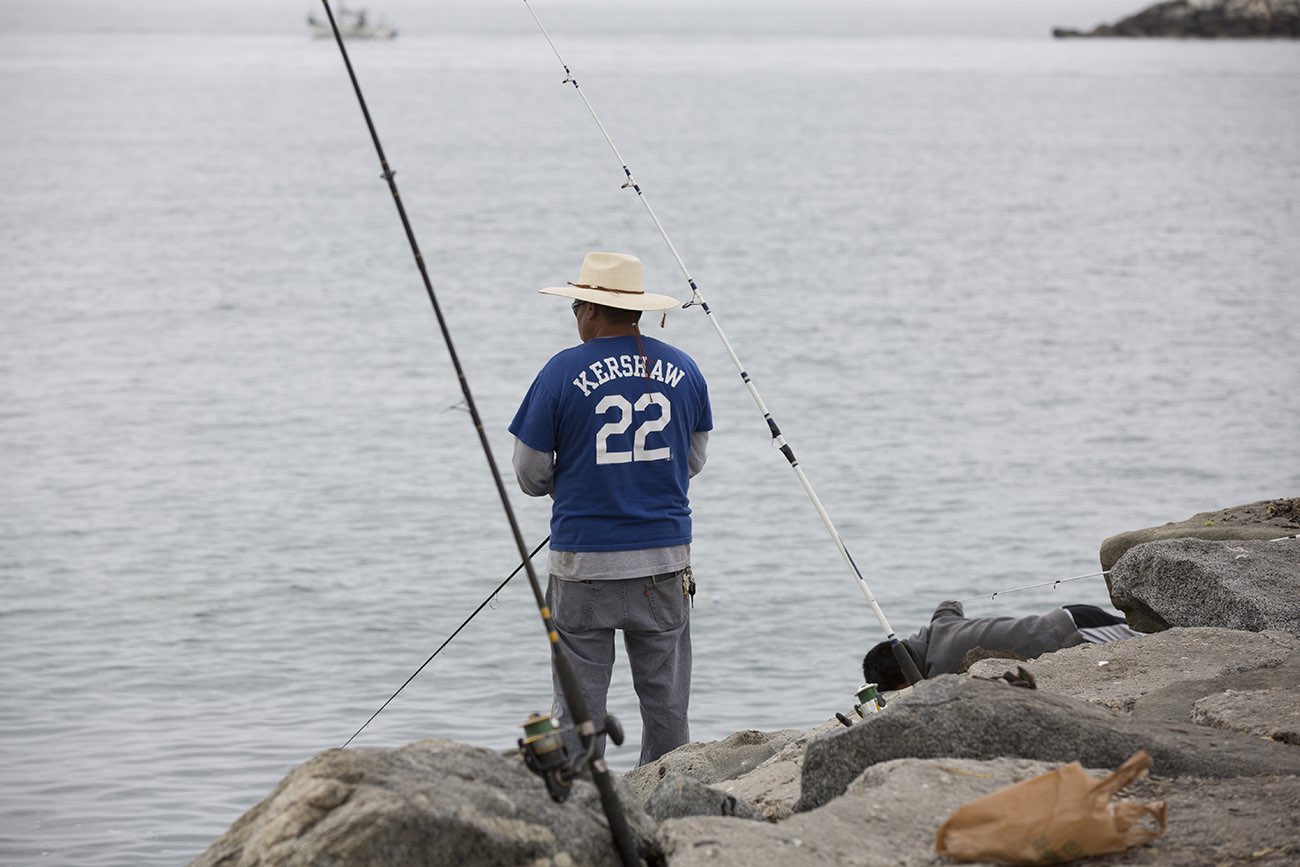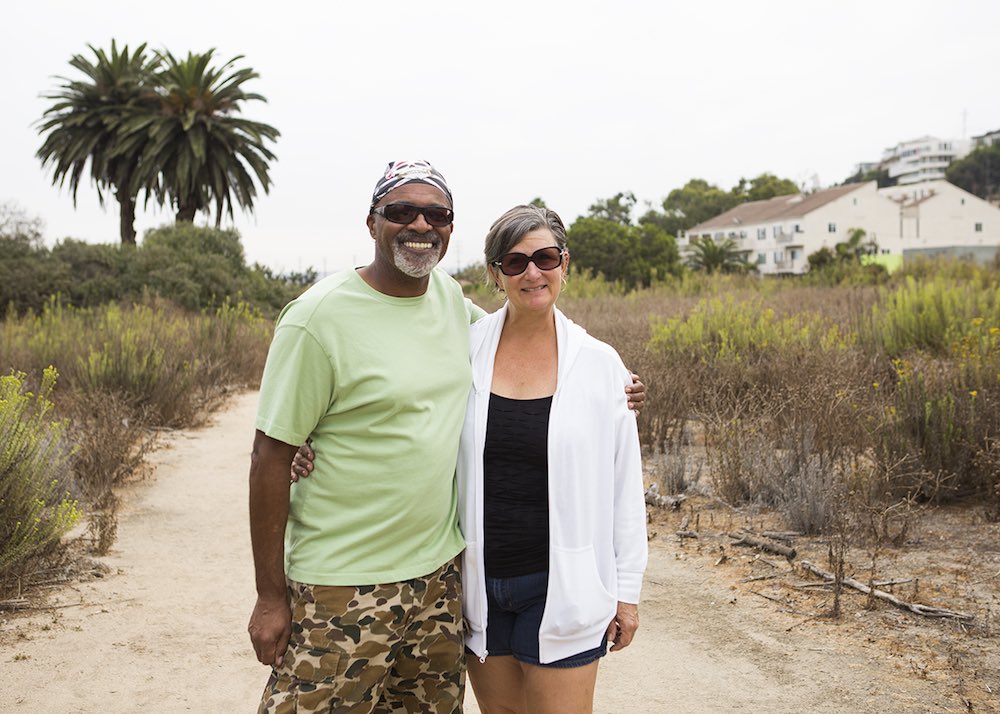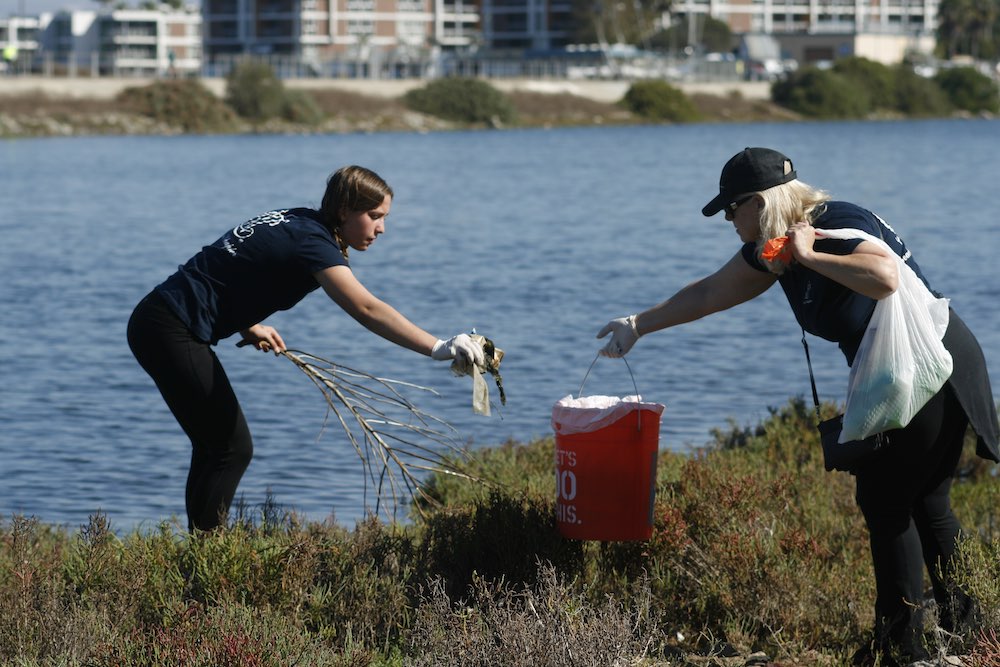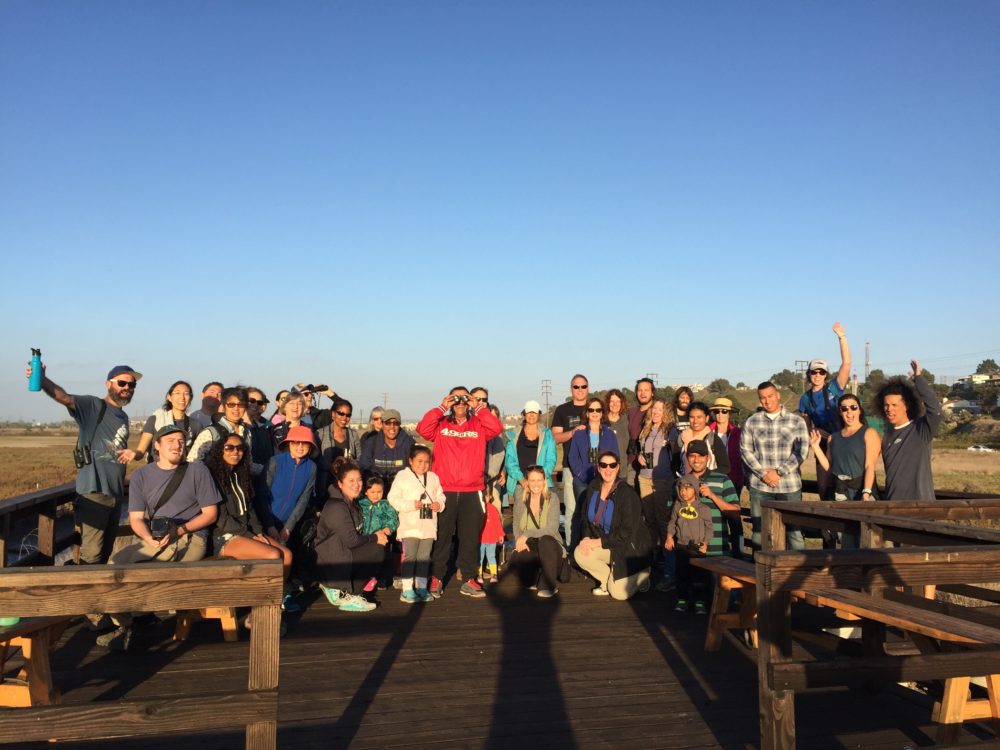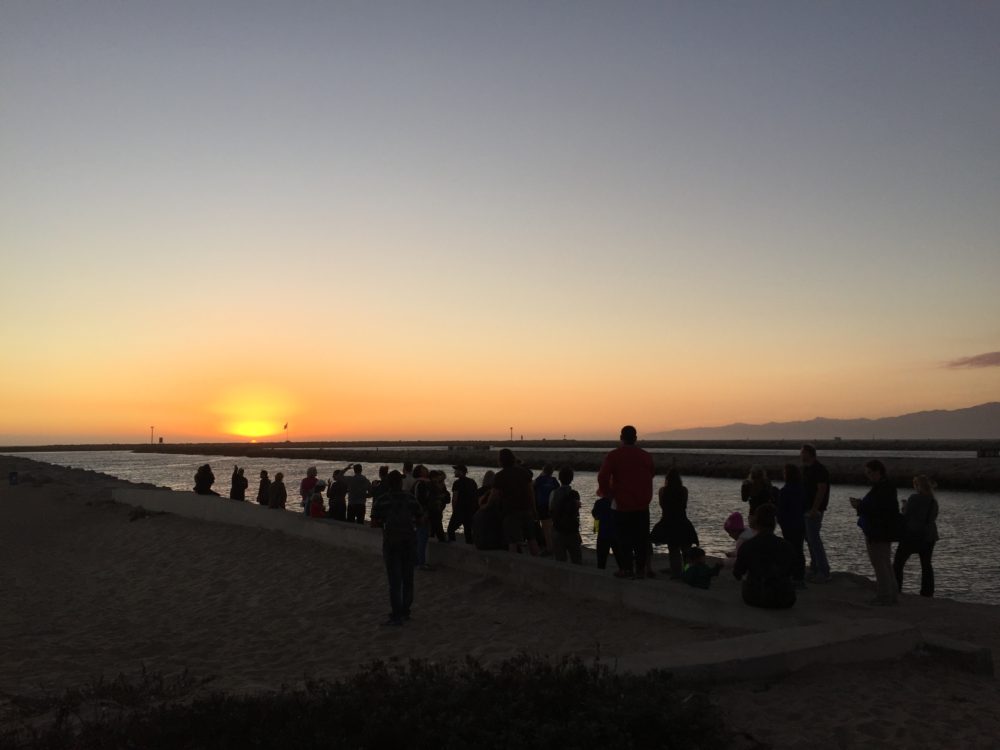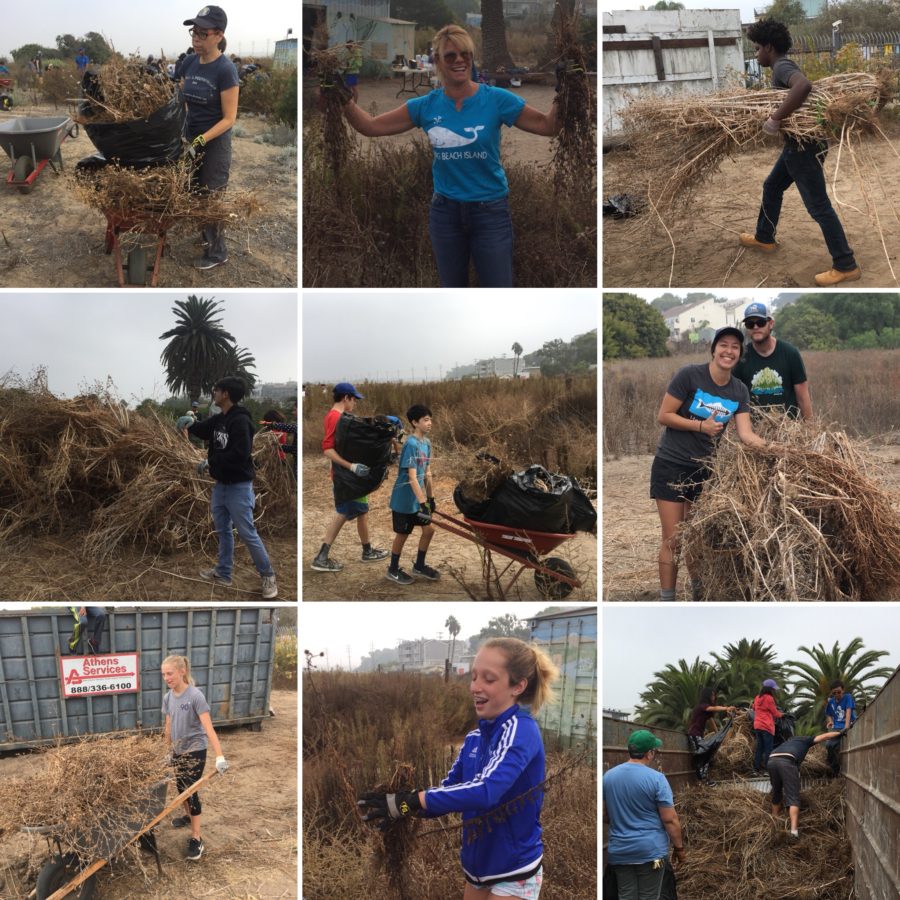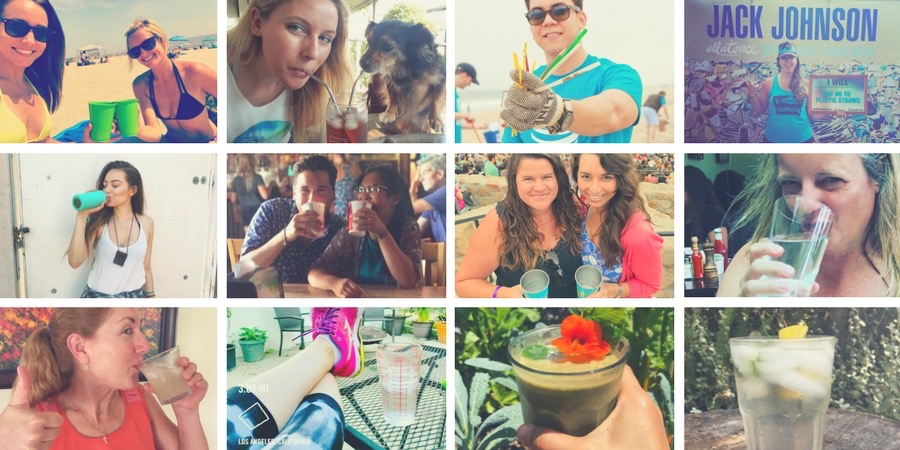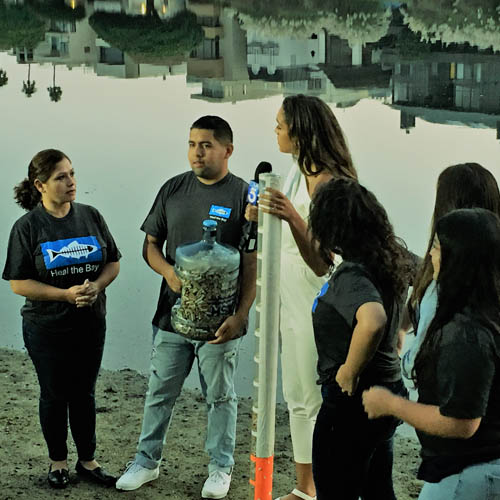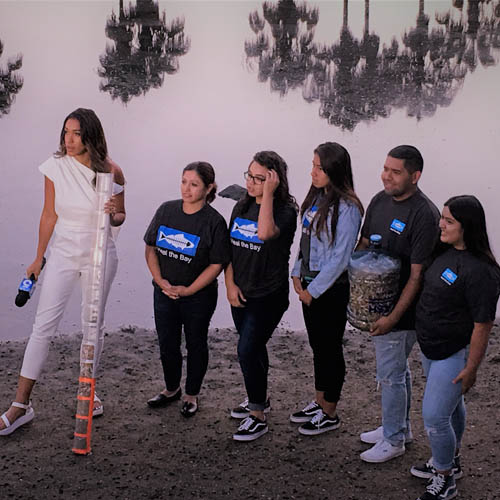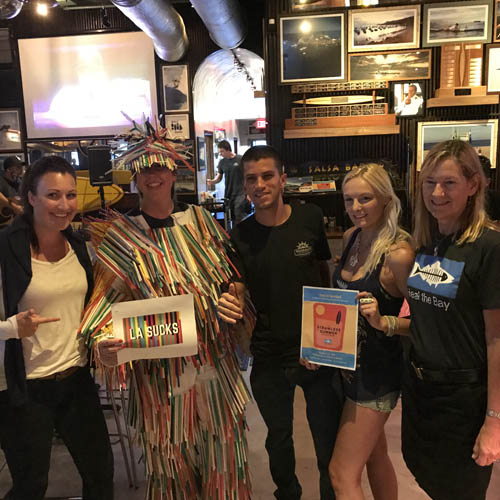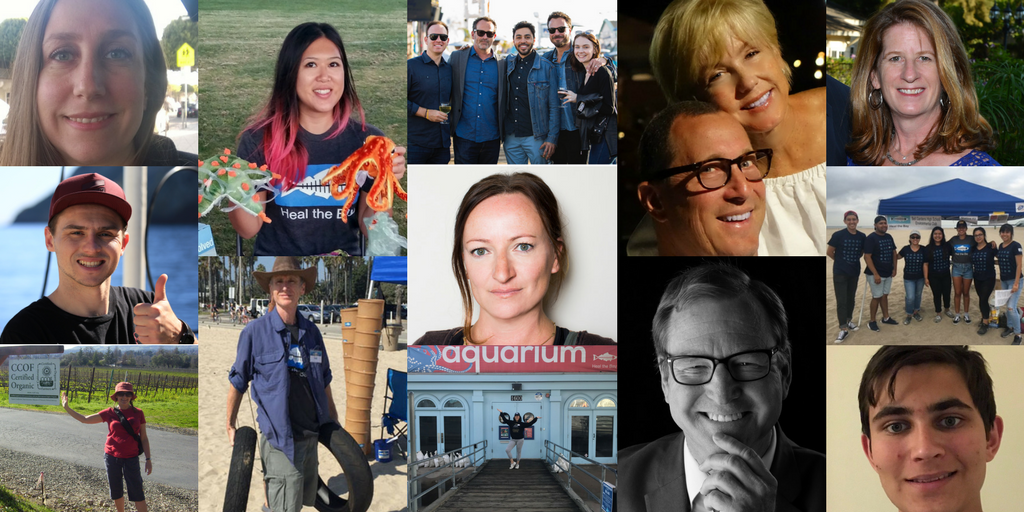
#NationalVolunteerWeek starts on April 15 and we’re getting an early start on saying thanks to the awesome Heal the Bay and Santa Monica Pier Aquarium volunteers who go above and beyond!
Our work at Heal the Bay wouldn’t be possible without our volunteers. Every year we host an awards party to recognize our most dedicated volunteers: Super Healers. Earlier this year in March, we gathered our fintastic Heal the Bay volunteers and staff to go back in time to the 80’s for an Under the Sea prom-themed Volunteer Party. It was an evening well spent with funny costumes, jellyfish floating above our heads, silly props for photo booth pictures, and ocean-inspired activities.
Big thank you to Bodega Wine Bar for hosting us. The food was delicious, and their staff was accommodating as always. We would also like to thank our volunteer party donors for the awesome raffle prize contributions. Many thanks to: Rockreation, Sweetfin Poke, Washed Ashore Adornments and Manhattan Stitching Company.
We can’t forget about the real all-stars of the night: our 2018 Super Healers.
These individuals truly go above and beyond their volunteer roles. They inspire others in their community, they bring amazing technology advancements to Heal the Bay, they are involved in multiple Heal the Bay volunteer programs, and they are always eager and enthusiastic.
This year, we awarded one Jean Howell Award, and thirteen Super Healer Awards. Read more about these exceptional individuals below:
Susan Lang (Jean Howell Award)
Susan’s introduction to Heal the Bay began in high school when she was given class assignment to create a presentation about Santa Monica Bay’s water quality. She made her way to the then one room Heal the Bay headquarters where a very helpful staff member gave her armfuls of data. That class assignment and the information she obtained from Heal the Bay sparked her commitment to environmental issues and the health of the Bay. She trained to be a beach captain and eventually expanded her support to several Bring Back the Beach Galas and Suits on the Sand events as well as helping out with Nick Gabaldon Day, doing community outreach for Prop 67 and lending her theatrical crafting skills to Straw-less Summer Campaign. Recently she completed Speakers Bureau training and looks forward to her next Heal the Bay project!
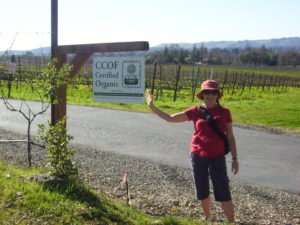
Jim LaVally (Speakers Bureau)
Jim, who has spent nearly 40 years in LA-area newsrooms, including at the Los Angeles Times, joined Heal the Bay as a volunteer in 2016.
Retirement allowed Jim to pursue a role in environmental advocacy, a longtime wish, and Heal the Bay was the perfect fit. He was familiar with Heal the Bay’s track record of environmental successes. Its mission also meshed nicely with Jim’s interests in natural history, geography and resource conservation.
Finally, by joining the Speakers Bureau, Jim hoped to achieve another goal: overcoming a sweat-inducing, bone-chilling fear of public speaking. And for helping him do exactly that, Jim will always hold a special place in his heart for Heal the Bay.
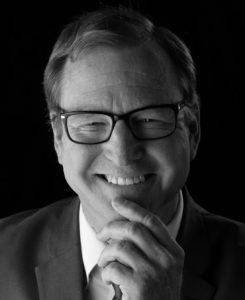
Grace Young (Street Fleet)
Grace’s first encounters with the ocean were the childhood trips to San Pedro tide pools. There she was wowed by a humongous darting octopus escaping to deeper waters during low tide. She has been in love with the ocean ever since. Her first volunteering experience with Heal the Bay started at a few Nothin’ but Sand clean ups in 2015. Eventually she wanted to take a more initiative approach in educating the public about how awesome our coast is, in tabling events and as a Beach Captain. Even though she works in the fashion industry, she would like to dedicate her career to marine conservation. Once said in Moana “Once you know what you like, well there you are”. Her dream job is to study tide pool ecosystems and implement less damaging activities in the area.
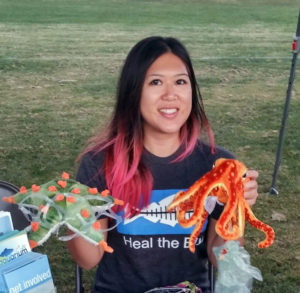
Nazeeg Mahserejian (Wednesday Warriors)
Naz first began volunteering at Heal the Bay in April 2017, as a Wednesday Warrior. Her most memorable projects have included the preparations for the Heal the Bay annual gala centerpieces, and the preparation and reparation on the straw monster costume for the Strawless Summer campaign, creating the hat and cup using the most chewed up, gnarly straws found during Heal the Bay’s monthly Nothin’ but Sand beach cleanups. Naz enjoys volunteering for Heal the Bay because of their mission to keep the beaches clean, and the wonderful, interesting, diverse people she’s met on Wednesdays. The projects are usually artsy, fun, and challenging. She looks forward to continue challenging herself, volunteering for Heal the Bay and meeting people of all ages, disciplines and backgrounds. And she’s also a beach captain!
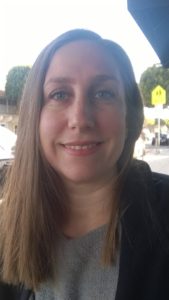
Patty Jimenez (Community Leader)
Patty has been a teacher at Bell Gardens High School for 20 years and advisor to the Environmental Club for 17 years. Her students don’t have the luxuries other students take for granted, but what they do possess in abundance is passion and concern for others. She loves the outdoors and has learned to appreciate it because her parents exposed her to nature through camping, hiking and traveling. Unfortunately, many students at Bell Gardens High School haven’t had those same experiences and she tries to bridge the gap as much as she can. Her hope is that as they grow, they will become involved outside of their community, and ultimately will learn to appreciate what she grew up loving and is now fighting to protect. Her students are involved locally: by improving the campus within the City of Bell Gardens, and were also instrumental in passing a city ordinance banning smoking in all public parks and regionally, with the support of Heal the Bay and Generation Earth/Tree People. With Patty’s leadership, her students have learned that they can have a tremendous impact on the health and well-being of our people and environment.

Ian Kimbrey Beach Programs
Ian transplanted to Santa Monica in 1979. He is a lifelong environmentalist, recycler and trash picker-upper. His long-suffering wife, Joanne, says he can ruin a perfectly good beach walk by always picking up trash. He is famous (infamous) for approaching random strangers on the shore and asking them to consider picking up at least one piece of trash before they leave the beach.
Ian started volunteering at Heal the Bay in 2016 as a Wednesday Warrior. He worked his way up from “bottle-washer’s bottle-washer”, to “deputy to the assistant bottle-washer-in-chief”.
Our previous Beach Programs Manager, Zoe, greatly praised Ian. To quote her: “He’s been a kick butt volunteer for both Suits on the Sand cleanups and Nothin’ but Sand cleanups. He has a great energy about him and does a fantastic job of engaging cleanup volunteers whether they’re from a corporation or young ones, plus he’s always up to date with the latest environmental news and likes to use props and articles in his beach talks. I was super fortunate to have such a dedicated volunteer to help facilitate cleanups and give advice about ways to make the beach programs more efficient, and I hope he continues to provide the same unwavering support to Heal the Bay’s beach programs in the coming year.”
Ian is currently working on a completely organic, re-usable drinking straw called “The Final Straw” as it is the last straw you will ever need!
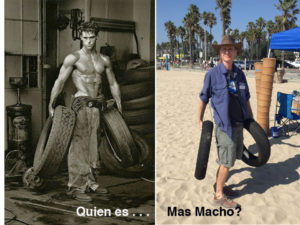
Sowgand (Sue) Baharloo (Santa Monica Pier Aquarium All Star)
Sue’s life dream is to study and work with animals. In fact, she wants to learn everything and anything she can about our planet: its wonders, its vast oceans, and the beautiful animals that inhabit it. Her passion led her to volunteer at the Santa Monica Pier Aquarium in October 2016. A year and a half later she says that volunteering at the aquarium has given her an amazing foundation – she has learned so much and has been given the tools and opportunities to stand up for our local marine animals.
Sue is an All-Star SMPA because she knows everything about the aquarium. She can tell you about any animal we have, read a great story during story time, lead thrilling sea star feedings, and never fails to greet you with a smile when you walk through the entrance. You’ll feel like you’ve known her your whole life because very quickly you’ll be nicknamed as one of her “loves” or “honey’s”. Sue is excited to continue building her experience at the aquarium.
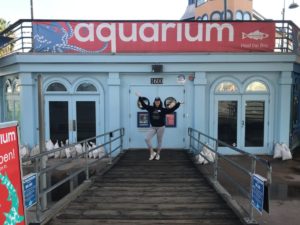
Taj Lalwani (Santa Monica Pier Aquarium Public Programs)
Taj has been fascinated with animals since a young age. He is passionate about protecting all the amazing life than lives on this planet, so he started volunteering at Heal the Bay because he wanted more children to care about animals and wildlife.
He loves his experience at the aquarium. To ensure that other Public Program volunteers at Santa Monica Pier Aquarium also have a positive experience he is working on a project analyzing long-term volunteer experiences, which began with a volunteer survey. He wants to work in marine or land ecology and conservation when he grows up.
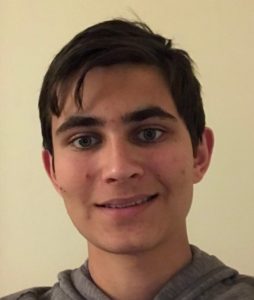
Laura Schare (MPA Watch)
Laura’s love affair with the ocean began as young girl when she first watched Jacques Cousteau, a marine documentary pioneer who quickly became my science Super-hero. Although she didn’t develop a career around the ocean, she did finally circle back as an adult to volunteer with both Heal the Bay and Santa Monica Pier Aquarium. Laura first became involved with Heal the Bay through iNaturalist and was invited to a bioblitz at Malibu Lagoon. Shortly thereafter, she became an MPA Watch volunteer and then joined the Aquarium education team. Ask Laura about iNaturalist and Citizen Science, she would love to share her passion for all things nature, especially our beloved oceans.
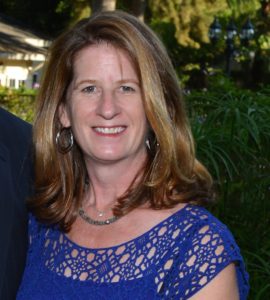
Zehner Group (Advocacy)
Here’s the secret to any good nonprofit advocacy campaign. Go to a creative agency and find the frustrated but brilliant surfer. That’s what we did when we hooked up with Mick McCarthy at the Zehner Group to help us devise a clever, catchy campaign for our “Strawless Summer Campaign.” Working with his partner, Hany Zayan, Mick helped us build a microsite and social media campaign that encouraged visitors to take the pledge to go strawless. They cleverly reminded us all that LA SUCKS as long as we keep using single-use plastics. Thanks to their hard work, we built public momentum for a number of new measures, such as Malibu’s recent decision to make straws available on a request-basis only.

Alex Warham (Communications)
Alex Warham has brought a virtual paradise to our Santa Monica Pier Aquarium. As the brains behind Diatom Productions, Alex donated many hours of creativity to us last year in helping us launch a virtual reality-style exhibit at the Aquarium. His crew captured footage of Heal the Bay staff diving off Marine Protected Areas (MPA) in Catalina and created a series of 360-degree films that show what an MPA really looks like. Our guests can now don goggles and dive in MPAs without ever getting wet! His gripping images will wow, inspire and motivate Aquarium visitors for years to come. If a picture is worth a thousand words, his images are worth a million!
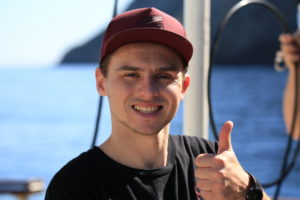
Nicola Buck (Outreach)
Nicola Buck is an L.A.-based photographer with a unique eye and a big heart. She helps Heal the Bay tell our vibrant story through photography. Nicola volunteers at countless events, including our Gala, Coastal Cleanup Day, and Explore Ballona series. Her photographs capture the joy, curiosity and teamwork that energize our community of volunteers, advocates, donors and Aquarium visitors. Thanks to Nicola’s compelling work for Heal the Bay, we have reached more people in our social media and digital channels, especially Instagram (follow Nicola at @lapicnic)!
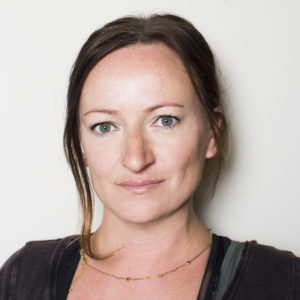
Luann Laval Williams (Board Member)
In case you didn’t know, all Heal the Bay Board members are volunteers. They don’t get paid to keep our doors open. Luann has been involved with Heal the Bay since she attended her first benefit dinner in 1997. Since then, she has been the Chairperson for Development, a Chairperson for a number of benefit dinners, is one of the agency’s most dedicated fundraisers and played a key role in Heal the Bay taking ownership of the Santa Monica Pier Aquarium. Luann brings a high level of energy, enthusiasm, creativity and FUN to everything she does. Additionally, Luann has introduced Heal the Bay to dozens of people who share our commitment to the ocean and who have since become strong advocates and donors.
Her advice to others thinking about volunteering: “When I came to Heal the Bay, I was just starting to get involved in the community. Heal the Bay helped me realize that I could make a difference in something as huge as keeping the ocean clean and safe. It’s a powerful thing to believe that you have something to bring to the table. I still have the excitement and enthusiasm for Heal the Bay now that I did when I first joined the Board”.
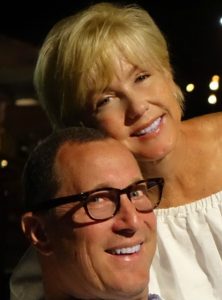
Friends of Ballona (Super Science Support)
Established in 1978, Friends of Ballona Wetland’s mission is to champion the restoration and protection of the Ballona Wetlands, involving and educating the public as advocates and stewards. Their primary objective is to inform and empower visitors of all ages. Through their educational tours, Explore Ballona! K-12 curricula, and restoration projects, the Friends help their neighbors and students from throughout the Greater Los Angeles area acquire the knowledge needed to take action to reduce negative human environmental impacts. Heal the Bay was honored to join forces with the Friends this past year in efforts to analyze, review, and comment on the Draft Environmental Impact Report for the restoration of the Ballona Wetlands. As a Coalition, we advocated for a robust restoration of Ballona Wetlands that was based in strong science. The Friends showed true leadership and vision in our Wetlands Coalition as well as provided critical hands-on opportunities for the public to visit and engage with the Wetlands.
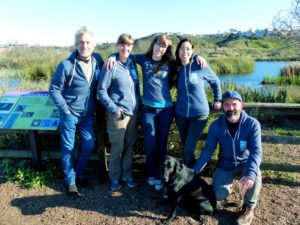
Become a Heal the Bay Volunteer





